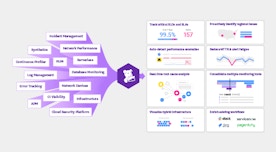
Jason Yee
Datadog is primarily used to monitor your infrastructure and applications, but for many Datadog users, the “data-driven” philosophy has grown to influence other aspects of their lives. From beer consumption to sleeping, restroom availability to energy use, Datadog community members are using monitoring to gain more visibility into their environment and make data-informed decisions to improve the world around them.
Data-driven consumption
One of the many reasons I love working at Lithium. Datadog alerts for our kegerator. @datadoghq @LSWEngKeg pic.twitter.com/SaDqsTr9ED
— Hugh McGowan (@hmcgowan) February 17, 2015
A simple way to improve your environment is to monitor something you enjoy to ensure that you never run out. That’s exactly what Andrew Malota did with the Lithium Technologies office kegerator.
Malota installed the Datadog Agent on a Raspberry Pi (learn how with this guide), then connected a digital weight scale to measure the quantity of the beer left in the keg. He also connected a thermometer to ensure the beer stays at an optimal temperature. Datadog monitors both the temperature and estimated quantity of beer, and sends alerts if the beer gets too warm or the keg needs a refill.
You can keep your beer cold and always in supply by setting up your own keg monitor using Lithium’s code.
Bathroom availability
People often use Datadog to investigate performance issues by identifying resource bottlenecks in their infrastructure that are causing scaling problems for their applications. As Datadog continues to grow, we’ve faced a similar real-world challenge in our New York office: restroom contention.
But many of our engineers aren’t just hackers, they’re also makers who love 3-D printers, microcontrollers and other tools that bridge the physical and digital worlds. So they decided to tackle the bathroom problem with monitoring! With some door sensors, Raspberry Pis, a little Python, and of course a Datadog dashboard, they built a system that allows anyone in the office to instantly check the status of the restrooms.
You can read more about the bathroom monitoring system on the Datadog Engineering Blog. Or be more productive and avoid waiting for the restroom, by forking the code and setting up your own office bathroom monitoring.
Sleep monitoring
Pulling the sensor data from my @TellSense into @datadoghq. Going to pull data from some TI Sensortags too pic.twitter.com/kSzsD9daIx
— chendo (@chendo) July 24, 2016
The Sense from Hello (@hello) is a tiny sphere packed with sensors—including light, sound, and air quality—that monitors your bedroom and provides feedback to help you get a better night’s sleep.
Although Hello doesn’t publish an API for the Sense, Jack Chen (@chendo) was able leverage mitmproxy to figure out how the Sense communicates. Then he created his own Sense API library. After he had built the API library, Chen says sending the metrics to Datadog was easy by polling the Sense API and using Mike Fiedler’s (@mikefiedler) statsd client library for Crystal to send data to the Datadog Agent running on a local machine.
At the moment he’s using the humidity sensor combined with Datadog alerts to help combat mold. He’s also working on integrating the Sense’s sleep and wake-up events into his home automation system.
Monitoring without dashboards
Datadog’s dashboards are a beautiful way to visualize data, but what if you didn’t need to visualize it at all? Voice interfaces like Alexa, Siri, and OK Google have become powerful ways to interact with devices, so Greg Shackles (@gshackles) created an Alexa–Datadog integration.
At the moment, Greg’s sample interface only queries for the current CPU metrics for your hosts, but after you read his blog post detailing the process, perhaps you’ll be inspired to fork his code and add even more voice queries.
Be data-driven
We regularly advise people to instrument everything and collect as many metrics as they can. Often that’s understood to be cloud infrastructure and distributed applications, but when you read how Datadog community members are applying monitoring in creative ways, you may be inspired to think of areas in your life and aspects of your environment that could benefit from more data visibility. So, what will you monitor next? Tell us on Twitter!
New to Datadog, but want to have fun with monitoring? Sign up for a full-featured free trial.





